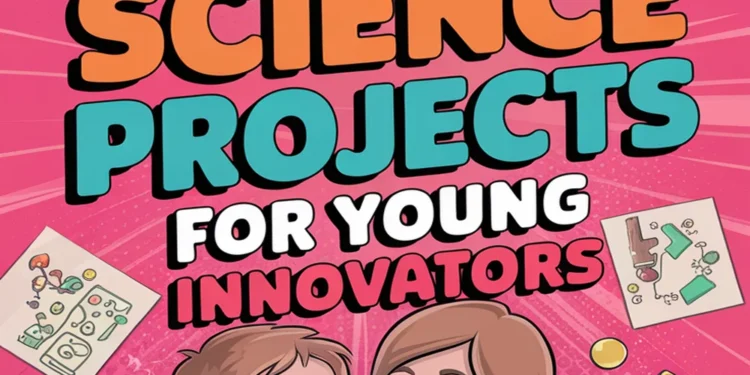Looking to spark curiosity in young innovators? Try creating a homemade volcano with baking soda and vinegar, or write secret messages with invisible ink made from lemon juice. Explore the water cycle with a simple setup, or discover density with a floating egg experiment. Craft a DIY lava lamp to witness chemical reactions, set up a simple circuit, observe plant growth under various conditions, or launch baking soda rockets for some explosive fun. Exciting ideas lie ahead!
Homemade Volcano
Creating your own homemade volcano is a fun and educational project that anyone can enjoy. To get started, you’ll need some simple materials: a bottle, baking soda, vinegar, food coloring, and a tray to catch the mess. Begin by placing your bottle in the center of the tray and shaping clay or playdough around it to create your volcano’s mountain. Mix baking soda with a few drops of food coloring in the bottle. When you’re ready, pour in the vinegar and watch your volcano erupt! The combination of baking soda and vinegar creates a fizzy reaction, mimicking a real volcanic eruption. Not only is this project exciting, but it also teaches you about chemical reactions in a hands-on way!
Invisible Ink
Have you ever wanted to send a secret message? With invisible ink, you can! It’s a fun and creative way to add an element of mystery to your notes. You don’t need fancy materials to get started; a few household items will do the trick. Here’s what you need:
- Lemon juice or baking soda (as ink)
- A cotton swab or small paintbrush
- A heat source, like a lamp or iron (to reveal your message)
Simply dip your cotton swab in lemon juice and write your secret message on paper. Once it dries, your message will be invisible! When you’re ready to read it, gently heat the paper, and watch your words come to life. Enjoy sending secret notes!
Recommended Items
Discover our curated selection of products and tools to inspire creativity and learning in your family—let’s dive in!
DIY Water Cycle
After sending your secret messages with invisible ink, why not explore the wonders of nature through a DIY water cycle project? This hands-on activity allows you to see how water moves in an exciting way. You’ll need a clear plastic container, a small cup, some water, and plastic wrap. Start by placing the cup in the center of the container and filling it with a bit of water. Then, cover the container with plastic wrap, making sure it’s tight. Place it in a sunny spot. As the sun heats the water, it evaporates, creating condensation on the wrap, which eventually drips back into the cup. It’s a fantastic way to visualize the water cycle at work! Give it a try!
Step-by-Step Guide to 8 Easy Science Projects
Floating Egg
Did you know that an egg can float? It’s true, and this simple experiment can help you understand density and buoyancy in a fun way! When you place an egg in water and it sinks, that means it’s fresh. However, if it floats, it’s a sign that air has seeped inside, making it less dense. Here’s what you’ll need to explore this fascinating concept:
- A bowl of water
- A raw egg
- Salt (to create a saltwater solution)
DIY Lava Lamp
Creating your very own DIY lava lamp is not only a fun project but also a fantastic way to learn about chemical reactions and density! To start, gather a clear bottle, water, vegetable oil, food coloring, and Alka-Seltzer tablets. Fill the bottle halfway with water, then add vegetable oil until it’s almost full. You’ll notice that the oil floats on top of the water because it’s less dense. Next, add a few drops of food coloring; it’ll sink through the oil and mix with the water. Break an Alka-Seltzer tablet into pieces and drop one in. Watch as colorful bubbles rise and fall, creating the mesmerizing effect of a lava lamp. Enjoy experimenting and have fun with your new creation!
Simple Circuit
Building a simple circuit is an exciting introduction to the world of electricity and how it powers our everyday devices. With just a few materials, you can create a functioning circuit that lights up a bulb or powers a small motor. It’s not only fun but also a great way to understand the basics of electrical flow.
Here are some easy items you’ll need to get started:
- Wires: They’ll connect your battery to the components.
- Battery: This will provide the power for your circuit.
- Light bulb: This will show you the result of your electrical connection.
Once you’ve gathered your materials, the real fun begins. You’ll learn how to complete the circuit and watch your project come to life!
Plant Growth Observation
As you immerse yourself in the fascinating world of plant growth observation, you’ll discover just how much there is to learn about the life cycle of plants and their responses to different environments. Start by planting seeds in different conditions—like varying amounts of sunlight or water. Observe how these factors impact their growth. Keep a journal to document your findings, noting changes in height, leaf size, and color. Don’t forget to measure the soil’s moisture and temperature to see how that affects your plants! This hands-on experience not only sparks curiosity but also helps you understand essential concepts such as photosynthesis and germination. By engaging with nature, you’ll become a mini-scientist, uncovering the secrets of plant life right before your eyes!
Baking Soda Rockets
While experimenting with baking soda rockets, you’ll discover the exciting science of chemical reactions and motion. This fun project combines simple ingredients to create an explosive experience that’s both educational and enjoyable. You’ll be amazed at how quickly your rocket will launch!
Here are some key aspects to explore:
- Chemical Reactions: See how baking soda and vinegar create carbon dioxide, propelling your rocket.
- Force and Motion: Understand Newton’s Third Law: for every action, there’s an equal and opposite reaction.
- Adjustable Designs: Tweak your rocket’s size and shape to see how it affects flight distance and height.
Grab your materials, get creative, and watch your rocket soar into the sky!













